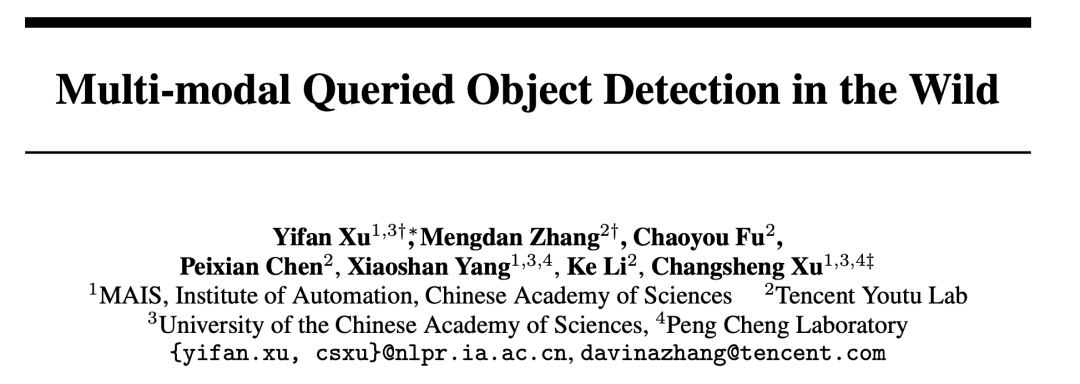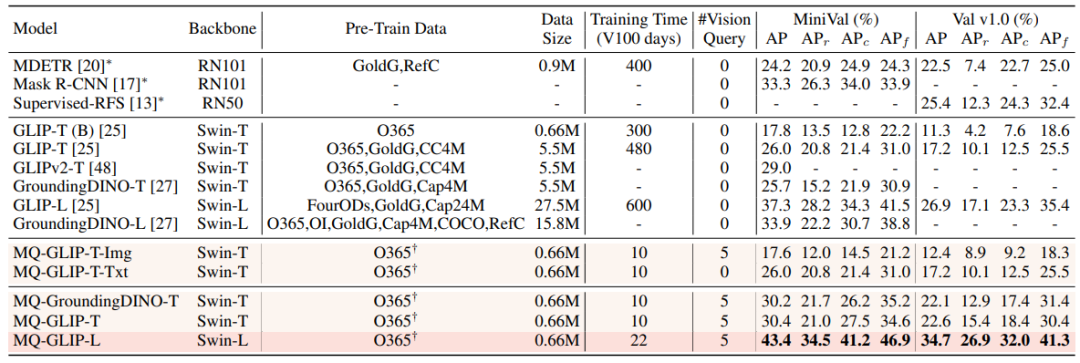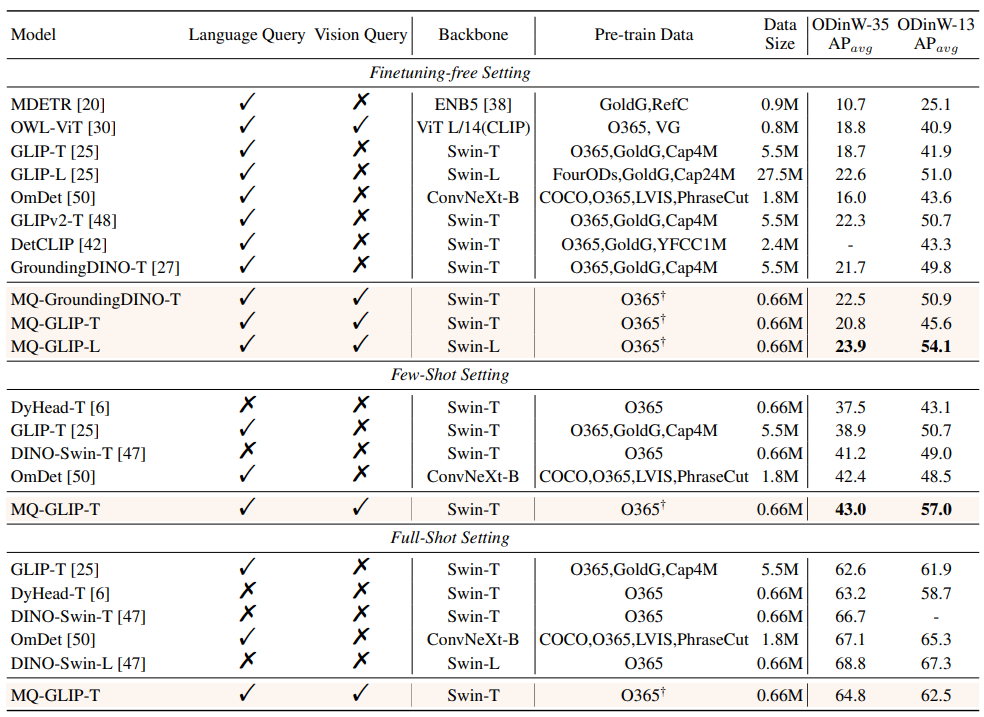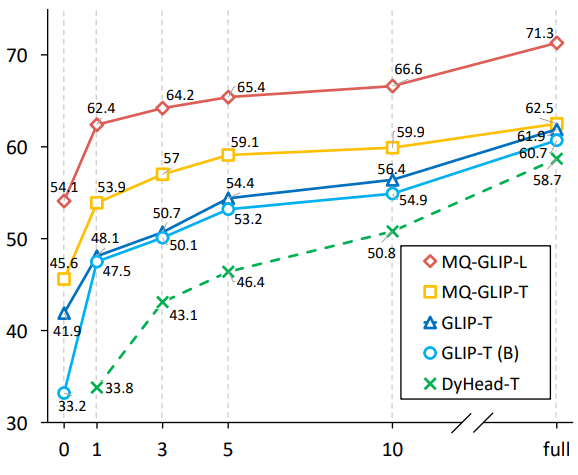 Technology peripherals
Technology peripherals
 AI
AI
 Let's look at pictures of large models more effectively than typing! New research in NeurIPS 2023 proposes a multi-modal query method, increasing the accuracy by 7.8%
Let's look at pictures of large models more effectively than typing! New research in NeurIPS 2023 proposes a multi-modal query method, increasing the accuracy by 7.8%
Let's look at pictures of large models more effectively than typing! New research in NeurIPS 2023 proposes a multi-modal query method, increasing the accuracy by 7.8%
The ability to "read pictures" of large models is so strong, why do they still find the wrong things?
For example, confusing bats and bats that don't look alike, or not recognizing rare fish in some data sets...
This is because we let the large model When "looking for something", the text is often entered.
If the description is ambiguous or too biased, such as "bat" (bat or bat?) or "devil medaka" (Cyprinodon diabolis) , the AI will will be greatly confused.
This leads to the use of large models for target detection, especially for open world (unknown scenes) target detection tasks. The effect is often ineffective. It's as good as imagined.
Now, a paper included in NeurIPS 2023 finally solves this problem.

The paper proposes a target detection method based on multi-modal queryMQ-Det, which only needs to add The previous picture example can greatly improve the accuracy of finding things with large models.
On the benchmark detection data set LVIS, without the need for downstream task model fine-tuning, MQ-Det improves the GLIP accuracy of the mainstream detection large model by about 7.8%# on average. ##, on 13 benchmark small sample downstream tasks, the average accuracy is improved by 6.3%.
How is this done? Lets come look.The following content is reproduced from the author of the paper and Zhihu blogger @沁园夏:
Directory- MQ-Det: Multi-mode A large open-world target detection model for dynamic query
- 1.1 From text query to multi-modal query
- 1.2 MQ-Det plug-and-play multi-modal query model architecture
- 1.3 MQ-Det efficient training strategy
- 1.4 Experimental results: Finetuning-free evaluation
- 1.5 Experimental results: Few-shot evaluation
- 1.6 Multi-modal query target detection Prospect
Paper name:Multi-modal Queried Object Detection in the Wild
Paper link: https://www.php.cn/link/9c6947bd95ae487c81d4e19d3ed8cd6f
Code address: https://www.php.cn/link/2307ac1cfee5db3a5402aac9db25cc5d

A picture is worth a thousand words: With the rise of image and text pre-training, and with the help of the open semantics of text, target detection has gradually entered the stage of open world perception. To this end, many large detection models follow the pattern of text query, which uses categorical text descriptions to query potential targets in target images. However, this approach often faces the problem of being “broad but not precise”.
For example, (1) for the fine-grained object(fish species) detection in Figure 1, it is often difficult to describe various fine-grained fish species with limited text, (2) Category ambiguity ("bat" can refer to both a bat and a bat) .
However, the above problems can be solved through image examples. Compared with text, images can providericher feature clues of the target object, but at the same time, text has powerful Generalizability.
Thus, how to organically combine the two query methods has become a natural idea.Difficulties in obtaining multi-modal query capabilities: How to obtain such a model with multi-modal query, there are three challenges: (1) It is very difficult to fine-tune directly with limited image examples. It is easy to cause catastrophic forgetting; (2) Training a large detection model from scratch will have good generalization but consumes a lot of money. For example, training GLIP on a single card requires 30 million data for 480 days.
Multi-modal query target detection: Based on the above considerations, the author proposed a simple and effective model design and training strategy-MQ-Det.
MQ-Det inserts a small number of gated perception modules(GCP) based on the existing large frozen text query detection model to receive input from visual examples, and also designs a visual condition mask The language prediction training strategy efficiently results in high-performance detectors for multi-modal queries.
1.2 MQ-Det plug-and-play multi-modal query model architecture
Gated Awareness Module
As shown in Figure 1, the author inserted the Gating Awareness Module(GCP) layer by layer into the text encoder side of the existing frozen text query detection large model. , the working mode of GCP can be succinctly expressed by the following formula:

(X-MHA) gets to enhance its representation ability, and then each category text ti will cross-attention with the visual example  of the corresponding category to get
of the corresponding category to get  , and then The original text ti and the visually augmented text
, and then The original text ti and the visually augmented text  are fused through a gating module gate to obtain the output
are fused through a gating module gate to obtain the output  of the current layer. Such a simple design follows three principles: (1) Category scalability; (2) Semantic completion; (3) Anti-forgetfulness. For detailed discussion, see the original text.
of the current layer. Such a simple design follows three principles: (1) Category scalability; (2) Semantic completion; (3) Anti-forgetfulness. For detailed discussion, see the original text. 
Modulated training based on frozen language query detector
Due to the current large pre-trained detection model of text queries It has good generalization ability. The author of the paper believes that it only needs to be slightly adjusted with visual details based on the original text features. There are also specific experimental demonstrations in the article that found that fine-tuning after opening the original pre-trained model parameters can easily lead to the problem of catastrophic forgetting, and instead lose the ability to detect the open world. Thus, MQ-Det can efficiently insert visual information into the detector of existing text queries by only modulating the GCP module inserted into the training based on the pre-trained detector of frozen text queries. In the paper, the author applies the structural design and training technology of MQ-Det to the current SOTA models GLIP and GroundingDINO respectively to verify the versatility of the method.Vision-conditioned mask language prediction training strategy
The author also proposed a vision-conditioned mask language prediction training strategy to solve the problem of frozen pre-programming. The problem of learning inertia caused by training models. The so-called learning inertia means that the detector tends to maintain the features of the original text query during the training process, thereby ignoring the newly added visual query features. To this end, MQ-Det randomly replaces text tokens with [MASK] tokens during training, forcing the model to learn from the visual query feature side, that is:
Finetuning-free: Compared with traditional zero-shot(zero-shot) evaluation only uses categories Text is tested, and MQ-Det proposes a more realistic evaluation strategy: finetuning-free. It is defined as: without any downstream fine-tuning, users can use category text, image examples, or a combination of both to perform object detection.
Under the finetuning-free setting, MQ-Det selects 5 visual examples for each category and combines the category text for target detection. However, other existing models do not support visual queries and can only Object detection with plain text descriptions. The following table shows the detection results on LVIS MiniVal and LVIS v1.0. It can be found that the introduction of multi-modal query greatly improves the open world target detection capability.△Table 1 The finetuning-free performance of each detection model under the LVIS benchmark data set
As can be seen from Table 1, MQ-GLIP-L has the highest performance in GLIP- Based on L, AP has been increased by more than 7%, and the effect is very significant!
1.5 Experimental results: Few-shot evaluation
△Table 2 Each model performs on 35 detection tasks ODinW-35 and its 13 subsets ODinW-13 Performance
The author further conducted comprehensive experiments on 35 downstream detection tasks ODinW-35. As can be seen from Table 2, in addition to its powerful finetuning-free performance, MQ-Det also has good small sample detection capabilities, which further confirms the potential of multi-modal query. Figure 2 also shows the significant improvement of MQ-Det on GLIP.
△Figure 2 Comparison of data utilization efficiency; horizontal axis: number of training samples, vertical axis: average AP on OdinW-13
1.6 Multi-modal Query the prospects of target detection
As a research field based on practical applications, target detection attaches great importance to the implementation of algorithms.
Although previous pure text query target detection models have shown good generalization, it is difficult for text to cover fine-grained information in actual open world detection, and the rich information granularity in images perfectly Completed this link.
So far we can find that text is general but not precise, and images are precise but not general. If we can effectively combine the two, that is, multi-modal query, it will push open world target detection further forward.
MQ-Det has taken the first step in multi-modal query, and its significant performance improvement also demonstrates the huge potential of multi-modal query target detection.
At the same time, the introduction of text descriptions and visual examples provides users with more choices, making target detection more flexible and user-friendly.
The above is the detailed content of Let's look at pictures of large models more effectively than typing! New research in NeurIPS 2023 proposes a multi-modal query method, increasing the accuracy by 7.8%. For more information, please follow other related articles on the PHP Chinese website!

Hot AI Tools

Undresser.AI Undress
AI-powered app for creating realistic nude photos

AI Clothes Remover
Online AI tool for removing clothes from photos.

Undress AI Tool
Undress images for free

Clothoff.io
AI clothes remover

AI Hentai Generator
Generate AI Hentai for free.

Hot Article

Hot Tools

Notepad++7.3.1
Easy-to-use and free code editor

SublimeText3 Chinese version
Chinese version, very easy to use

Zend Studio 13.0.1
Powerful PHP integrated development environment

Dreamweaver CS6
Visual web development tools

SublimeText3 Mac version
God-level code editing software (SublimeText3)

Hot Topics
 1386
1386
 52
52
 The world's most powerful open source MoE model is here, with Chinese capabilities comparable to GPT-4, and the price is only nearly one percent of GPT-4-Turbo
May 07, 2024 pm 04:13 PM
The world's most powerful open source MoE model is here, with Chinese capabilities comparable to GPT-4, and the price is only nearly one percent of GPT-4-Turbo
May 07, 2024 pm 04:13 PM
Imagine an artificial intelligence model that not only has the ability to surpass traditional computing, but also achieves more efficient performance at a lower cost. This is not science fiction, DeepSeek-V2[1], the world’s most powerful open source MoE model is here. DeepSeek-V2 is a powerful mixture of experts (MoE) language model with the characteristics of economical training and efficient inference. It consists of 236B parameters, 21B of which are used to activate each marker. Compared with DeepSeek67B, DeepSeek-V2 has stronger performance, while saving 42.5% of training costs, reducing KV cache by 93.3%, and increasing the maximum generation throughput to 5.76 times. DeepSeek is a company exploring general artificial intelligence
 AI subverts mathematical research! Fields Medal winner and Chinese-American mathematician led 11 top-ranked papers | Liked by Terence Tao
Apr 09, 2024 am 11:52 AM
AI subverts mathematical research! Fields Medal winner and Chinese-American mathematician led 11 top-ranked papers | Liked by Terence Tao
Apr 09, 2024 am 11:52 AM
AI is indeed changing mathematics. Recently, Tao Zhexuan, who has been paying close attention to this issue, forwarded the latest issue of "Bulletin of the American Mathematical Society" (Bulletin of the American Mathematical Society). Focusing on the topic "Will machines change mathematics?", many mathematicians expressed their opinions. The whole process was full of sparks, hardcore and exciting. The author has a strong lineup, including Fields Medal winner Akshay Venkatesh, Chinese mathematician Zheng Lejun, NYU computer scientist Ernest Davis and many other well-known scholars in the industry. The world of AI has changed dramatically. You know, many of these articles were submitted a year ago.
 Google is ecstatic: JAX performance surpasses Pytorch and TensorFlow! It may become the fastest choice for GPU inference training
Apr 01, 2024 pm 07:46 PM
Google is ecstatic: JAX performance surpasses Pytorch and TensorFlow! It may become the fastest choice for GPU inference training
Apr 01, 2024 pm 07:46 PM
The performance of JAX, promoted by Google, has surpassed that of Pytorch and TensorFlow in recent benchmark tests, ranking first in 7 indicators. And the test was not done on the TPU with the best JAX performance. Although among developers, Pytorch is still more popular than Tensorflow. But in the future, perhaps more large models will be trained and run based on the JAX platform. Models Recently, the Keras team benchmarked three backends (TensorFlow, JAX, PyTorch) with the native PyTorch implementation and Keras2 with TensorFlow. First, they select a set of mainstream
 Hello, electric Atlas! Boston Dynamics robot comes back to life, 180-degree weird moves scare Musk
Apr 18, 2024 pm 07:58 PM
Hello, electric Atlas! Boston Dynamics robot comes back to life, 180-degree weird moves scare Musk
Apr 18, 2024 pm 07:58 PM
Boston Dynamics Atlas officially enters the era of electric robots! Yesterday, the hydraulic Atlas just "tearfully" withdrew from the stage of history. Today, Boston Dynamics announced that the electric Atlas is on the job. It seems that in the field of commercial humanoid robots, Boston Dynamics is determined to compete with Tesla. After the new video was released, it had already been viewed by more than one million people in just ten hours. The old people leave and new roles appear. This is a historical necessity. There is no doubt that this year is the explosive year of humanoid robots. Netizens commented: The advancement of robots has made this year's opening ceremony look like a human, and the degree of freedom is far greater than that of humans. But is this really not a horror movie? At the beginning of the video, Atlas is lying calmly on the ground, seemingly on his back. What follows is jaw-dropping
 KAN, which replaces MLP, has been extended to convolution by open source projects
Jun 01, 2024 pm 10:03 PM
KAN, which replaces MLP, has been extended to convolution by open source projects
Jun 01, 2024 pm 10:03 PM
Earlier this month, researchers from MIT and other institutions proposed a very promising alternative to MLP - KAN. KAN outperforms MLP in terms of accuracy and interpretability. And it can outperform MLP running with a larger number of parameters with a very small number of parameters. For example, the authors stated that they used KAN to reproduce DeepMind's results with a smaller network and a higher degree of automation. Specifically, DeepMind's MLP has about 300,000 parameters, while KAN only has about 200 parameters. KAN has a strong mathematical foundation like MLP. MLP is based on the universal approximation theorem, while KAN is based on the Kolmogorov-Arnold representation theorem. As shown in the figure below, KAN has
 Tesla robots work in factories, Musk: The degree of freedom of hands will reach 22 this year!
May 06, 2024 pm 04:13 PM
Tesla robots work in factories, Musk: The degree of freedom of hands will reach 22 this year!
May 06, 2024 pm 04:13 PM
The latest video of Tesla's robot Optimus is released, and it can already work in the factory. At normal speed, it sorts batteries (Tesla's 4680 batteries) like this: The official also released what it looks like at 20x speed - on a small "workstation", picking and picking and picking: This time it is released One of the highlights of the video is that Optimus completes this work in the factory, completely autonomously, without human intervention throughout the process. And from the perspective of Optimus, it can also pick up and place the crooked battery, focusing on automatic error correction: Regarding Optimus's hand, NVIDIA scientist Jim Fan gave a high evaluation: Optimus's hand is the world's five-fingered robot. One of the most dexterous. Its hands are not only tactile
 FisheyeDetNet: the first target detection algorithm based on fisheye camera
Apr 26, 2024 am 11:37 AM
FisheyeDetNet: the first target detection algorithm based on fisheye camera
Apr 26, 2024 am 11:37 AM
Target detection is a relatively mature problem in autonomous driving systems, among which pedestrian detection is one of the earliest algorithms to be deployed. Very comprehensive research has been carried out in most papers. However, distance perception using fisheye cameras for surround view is relatively less studied. Due to large radial distortion, standard bounding box representation is difficult to implement in fisheye cameras. To alleviate the above description, we explore extended bounding box, ellipse, and general polygon designs into polar/angular representations and define an instance segmentation mIOU metric to analyze these representations. The proposed model fisheyeDetNet with polygonal shape outperforms other models and simultaneously achieves 49.5% mAP on the Valeo fisheye camera dataset for autonomous driving
 The latest from Oxford University! Mickey: 2D image matching in 3D SOTA! (CVPR\'24)
Apr 23, 2024 pm 01:20 PM
The latest from Oxford University! Mickey: 2D image matching in 3D SOTA! (CVPR\'24)
Apr 23, 2024 pm 01:20 PM
Project link written in front: https://nianticlabs.github.io/mickey/ Given two pictures, the camera pose between them can be estimated by establishing the correspondence between the pictures. Typically, these correspondences are 2D to 2D, and our estimated poses are scale-indeterminate. Some applications, such as instant augmented reality anytime, anywhere, require pose estimation of scale metrics, so they rely on external depth estimators to recover scale. This paper proposes MicKey, a keypoint matching process capable of predicting metric correspondences in 3D camera space. By learning 3D coordinate matching across images, we are able to infer metric relative







